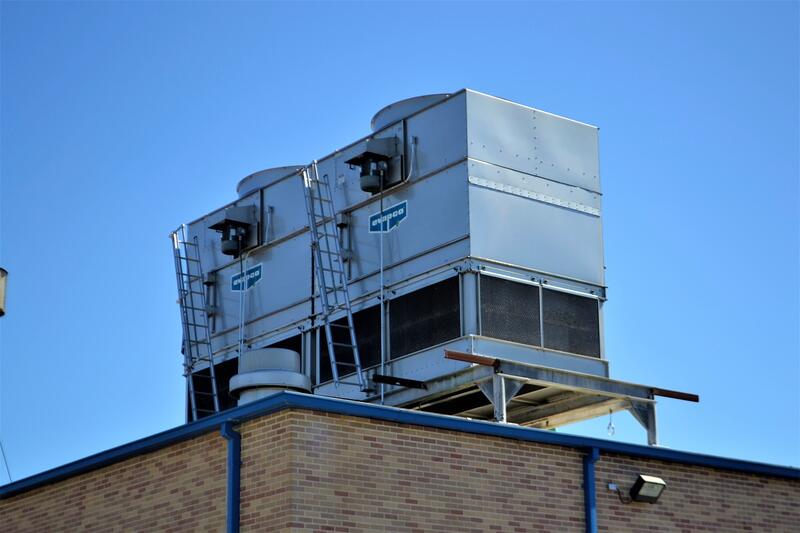Charting the Course to Decarbonization in Plumbing, heat and air-conditioning installation: Strategies and Initiatives
This article explores strategies and initiatives for decarbonizing plumbing, heating, and air-conditioning installations to combat climate change and promote sustainability.

The plumbing, heat, and air-conditioning installation sector is a significant contributor to carbon emissions. The sector is responsible for providing essential services such as heating, ventilation, and air conditioning, which are crucial for maintaining comfortable living and working environments. However, the energy consumption required to provide these services leads to significant carbon emissions, which contribute to climate change. Decarbonisation is the process of reducing carbon emissions and transitioning to a low-carbon economy. In this article, we will explore the concept of decarbonisation in the plumbing, heat, and air-conditioning installation sector, its importance, the main sources of carbon emissions in the sector, ways to reduce carbon emissions, challenges facing decarbonisation, and the implications of decarbonisation for the sector.
What is Decarbonisation in the Plumbing, Heat, and Air-conditioning Installation Sector and Why is it Important?
Decarbonisation is the process of reducing carbon emissions and transitioning to a low-carbon economy. The plumbing, heat, and air-conditioning installation sector is a significant contributor to carbon emissions, accounting for approximately 10% of the UK's carbon emissions. Decarbonisation is important as it is necessary to reduce carbon emissions to mitigate the impacts of climate change. The plumbing, heat, and air-conditioning installation sector must play a significant role in decarbonisation efforts to achieve the UK's net-zero carbon emissions target by 2050.
The Main Sources of Carbon Emissions in the Plumbing, Heat, and Air-conditioning Installation Sector
The main sources of carbon emissions in the plumbing, heat, and air-conditioning installation sector are energy consumption for heating, ventilation, and air conditioning. The sector relies heavily on fossil fuels such as natural gas and oil to provide these services, which leads to significant carbon emissions. The use of refrigerants in air conditioning systems also contributes to carbon emissions, as many refrigerants have a high global warming potential.
How Can We Reduce Carbon Emissions in the Plumbing, Heat, and Air-conditioning Installation Sector?
There are several ways to reduce carbon emissions in the plumbing, heat, and air-conditioning installation sector. The following are some of the most effective ways to reduce carbon emissions:
- Energy Efficiency: Improving energy efficiency is one of the most effective ways to reduce carbon emissions in the sector. This can be achieved through the installation of energy-efficient heating systems, insulation, and smart controls that allow for the efficient use of energy.
- Renewable Energy: The use of renewable energy sources such as solar, wind, and geothermal energy can significantly reduce carbon emissions in the sector. Renewable energy sources can be used to power heating and cooling systems, reducing the reliance on fossil fuels.
- Low-Carbon Heating: The use of low-carbon heating systems such as heat pumps and district heating can significantly reduce carbon emissions in the sector. Heat pumps use electricity to extract heat from the air or ground, providing a low-carbon heating solution. District heating systems use a central heat source to provide heating to multiple buildings, reducing the need for individual heating systems.
- Refrigerant Management: The use of refrigerants with a low global warming potential can significantly reduce carbon emissions in the sector. Regular maintenance and servicing of air conditioning systems can also ensure that refrigerants are not leaked into the atmosphere.
What are the Challenges Facing Decarbonisation in the Plumbing, Heat, and Air-conditioning Installation Sector?
There are several challenges facing decarbonisation in the plumbing, heat, and air-conditioning installation sector. The following are some of the most significant challenges:
- Cost: The installation of low-carbon heating systems and energy-efficient technologies can be costly, making it challenging for some households and businesses to invest in these solutions.
- Retrofitting: Retrofitting existing buildings with low-carbon heating systems and energy-efficient technologies can be challenging and costly. Many buildings were not designed with these solutions in mind, making retrofitting a complex process.
- Skills Shortage: There is a shortage of skilled workers in the plumbing, heat, and air-conditioning installation sector, making it challenging to implement decarbonisation solutions effectively.
- Consumer Awareness: Many consumers are not aware of the benefits of low-carbon heating systems and energy-efficient technologies, making it challenging to encourage uptake.
What are the Implications of Decarbonisation for the Plumbing, Heat, and Air-conditioning Installation Sector?
Decarbonisation will have significant implications for the plumbing, heat, and air-conditioning installation sector. The following are some of the most significant implications:
- New Business Opportunities: Decarbonisation will create new business opportunities for the sector, such as the installation and maintenance of low-carbon heating systems and energy-efficient technologies.
- Skills Development: The sector will need to develop new skills to implement low-carbon solutions effectively, providing opportunities for skills development and training.
- Increased Competition: Decarbonisation will lead to increased competition in the sector as businesses compete to provide low-carbon solutions.
- Consumer Awareness: Decarbonisation will increase consumer awareness of the benefits of low-carbon heating systems and energy-efficient technologies, leading to increased demand for these solutions.
Conclusion
Decarbonisation is essential to reduce carbon emissions and mitigate the impacts of climate change. The plumbing, heat, and air-conditioning installation sector is a significant contributor to carbon emissions, and decarbonisation efforts must focus on reducing energy consumption for heating, ventilation, and air conditioning. Improving energy efficiency, using renewable energy sources, installing low-carbon heating systems, and managing refrigerants are effective ways to reduce carbon emissions in the sector. However, decarbonisation efforts face several challenges, such as cost, retrofitting, skills shortage, and consumer awareness. Decarbonisation will have significant implications for the sector, creating new business opportunities, requiring skills development, increasing competition, and raising consumer awareness.